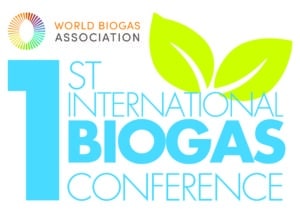
A winning formula: bridging the gap between R&D and commercialisation
Ahead of speaking at the 1st International Biogas Conference, Thomas Minter, Director of WBA member Malaby Biogas, tells WBA about taking a plant from a concept to an industrial reality and bridging the gap between research and development (R&D) and commercial application
What is the ‘valley of death’ between R&D and commercial application?
The route from an academic idea to a proven technology is based on progression through a series of nine defined Technology Readiness Levels (TRLs), where TRL1 is an idea or research-based concept and TRL9 is a proven technology deployable at full scale. This is also known as the ‘innovation chain’. TRLs 1 to 5 are usually funded by R&D grants through research institutions, while TRLs 7 to 9 are usually funded by loans, private equity, and balance sheets. The gap in the middle, known as the funding ‘valley of death’, applies to technologies where the concept has been proven but not yet commercialised.
What can AD developers do to avoid the valley of death?
The valley of death can’t be avoided but needs to be worked through. Collaboration is the key to unlocking this problem: AD developers and funders will not risk capital to do this but the initial design of AD plants can make it easier for operators to collaborate with the R&D sector to work through the valley of death.
What are the most exciting developments in AD R&D at the moment?
- Gas quality improvements. These can be brought about by improving energy density (converting CO2 to methane through biomethanation), stripping out CO2, and reducing contaminants such as hydrogen sulphide, water, and siloxanes.
- Reducing the capital cost of plants. This can be achieved by: reducing hydraulic retention time to increase throughput; streamlining planning, design, and permitting; and by implementing standardised and modular systems – increasing off-site fabrication, for example, reduces plant and material installation costs.
- Valorising digestate. This needs to be achieved by demonstrating the benefit of digestate to farmers, better agronomic understanding of digestate, condensing its nutrient value through separation and dewatering, and improving the removal of contamination at source.
- Integrated development to maximise the value of AD’s outputs (heat, power, and digestate). Malaby Biogas’s development business has been promoting co-located commercial, residential, community and industrial support development projects that can take advantage of the renewable energy outputs from an AD plant. Opportunities are site-specific, but using energy as closely to the source of generation (the AD plant) as possible massively decreases the carbon footprint of energy transmission and massively promotes other sustainability goals such as employment, education, waste management, and resource efficiency.
What can governments do to support commercialisation of new AD technologies?
- Reduce regulation to support innovation. In the UK, for example, approximately 30% of the capital expenditure of AD plant development relates to compliance (planning and development control, health and safety, and environmental compliance) rather than energy production or resource efficiency. Streamlining compliance to encourage a speedier and more cost-effective transition through the pre-operational stages of development would reduce funding burdens and speed up the delivery of benefits. Regulatory compliance is currently a large burden on AD development.
- Introduce better and more easily accessible funding support. In the UK, Renewable Obligation Certificates, the Feed-in Tariff, and the Renewable Heat Incentive are far more cumbersome to comply with than they need to be due to a mismatch between policy ambitions and budgetary oversight. A lack of long-term focus on climate change mitigation across policy areas and an inability or lack of willingness of government to support success through simple scheme extensions or replacement support schemes mean that momentum for successful delivery is currently constrained.
- Develop innovation centres. An increase in efficiency of the AD process is possible but there needs to be a structured mechanism to support innovations across their lifecycle (TRL transitions, from academic R&D to product and service development). Funding and space to do this is needed to expand the R&D pipeline.
- Improve education of AD’s benefits within governments. There’s a need for increased promotion of the cross-departmental benefits of AD – this promotion needs to be directed at government officials (both politicians and policymakers) consistently, continuously and clearly. It’s vital that the ‘existential threat’ of climate change is highlighted to encourage support for technologies such as AD that can deliver benefit now and at scale.
Thomas will be discussing this topic in much more detail at the 1st International Biogas Conference in Athens on 3-4 May.



